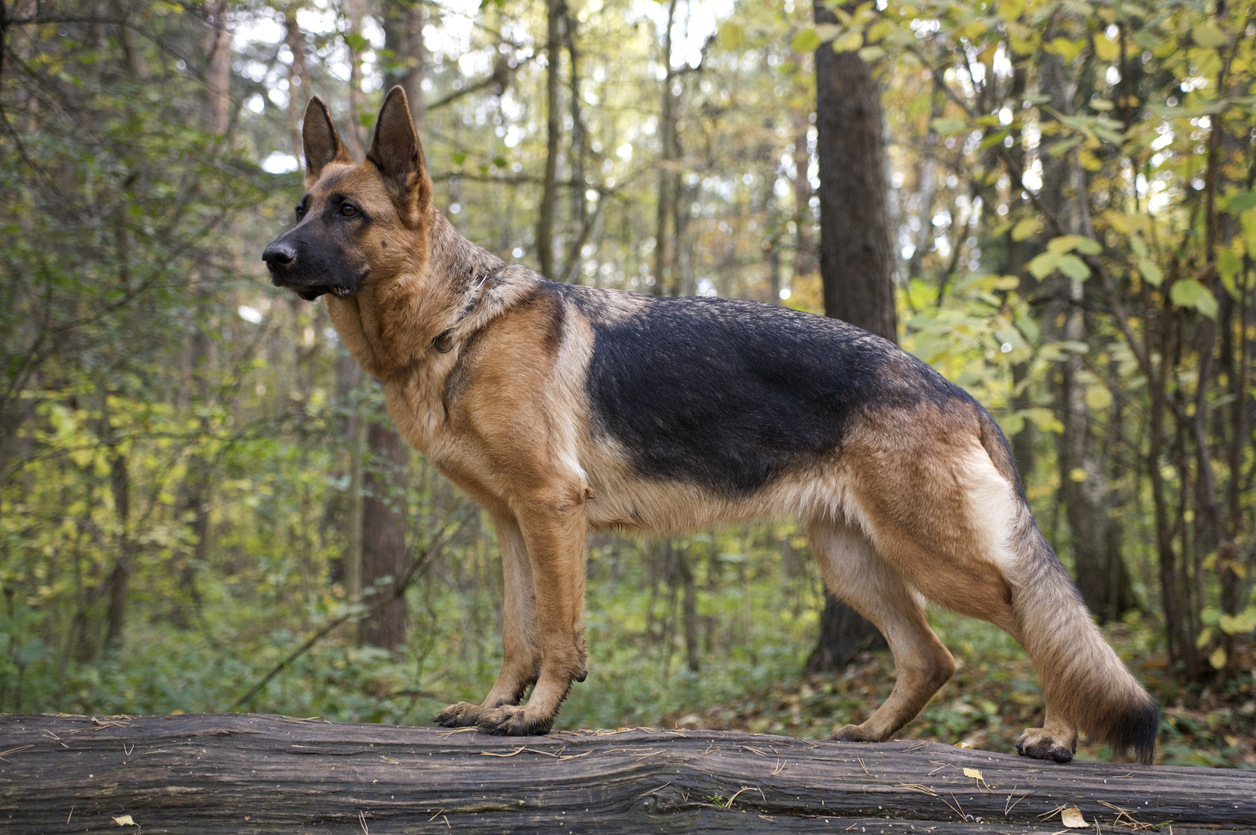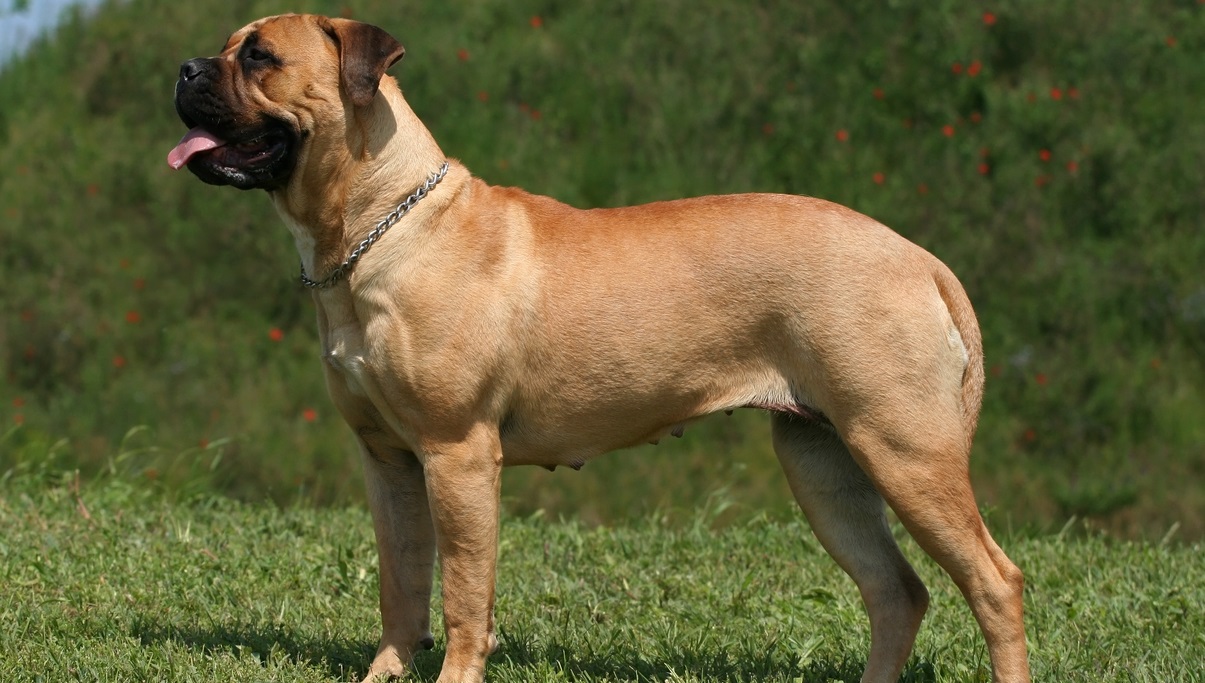What do you get when you cross a brawny bulldog and a massive mastiff? There’s probably a joke in there somewhere, but we’ll give you a straight answer: You get a bullmastiff.
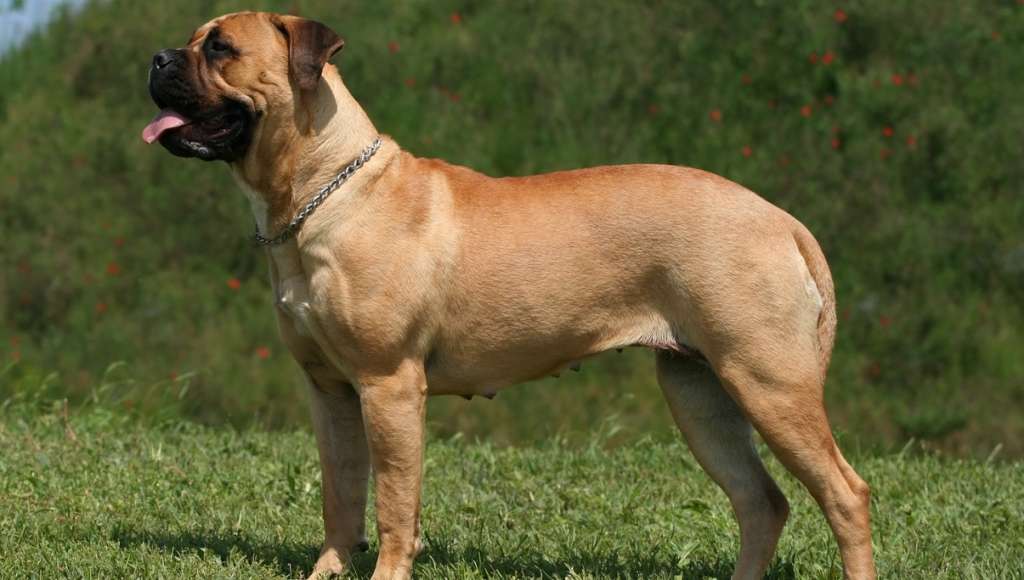

With their big faces and broad, burly shoulders, bullmastiffs are the definition of “large and in charge.” And yet, despite their size, strength, and stamina—all highly desirable traits during their working days on English estates—these tenacious dogs make sweet and sensitive family pets. If you have the space in your home to keep one of these peppy pups, you’ll have no trouble finding the space in your heart.
Breed Overview
Also Known As…
The Gamekeepers Night Dog (cool, right?). Watcher of wildlife, pursuer of poachers, keeper of the couch. The book you shouldn’t judge by its cover.
What Is The History Of The Bullmastiff?
Unlike some of the more ancient dog breeds—think Chow Chow or Shih Tzu—bullmastiffs are a relatively recent addition to the puppy pantheon. While they’ve likely been around for a few hundred years, the well-documented history of this dog breed begins around 1860.1
The story goes like this: In 19th century England, wealthy estate owners had a poaching problem. You see, the nobles of the time had these enormous tracts of land, and they wanted the sole privilege of hunting all the wildlife on their grounds. Unfortunately for the aristocrats, an ever-growing number of pesky thieves also wanted to hunt and steal the creatures and critters of the forest.
This simply would not do. So, to protect their land and all the animals on the premises (at least, for the time being), the landowners tasked their gamekeepers with keeping the grounds poacher-free. Their solution? A mean-looking mutt with enough speed and strength to catch a thief—and the brains and grace to know not to tear the poacher to shreds.
And so, the bullmastiff was born. As English gamekeepers experimented with different combinations of old English bulldog (now extinct) and English mastiff, they eventually settled on the perfect equation: 60% mastiff, 40% bulldog.1 Now 100% ready to protect the estate, the breed spent the next century or so tracking criminals and pleasing their employers.
Today, the bullmastiff has retired, so to speak—the only “estate” this muscular mutt needs to watch over is the backyard.
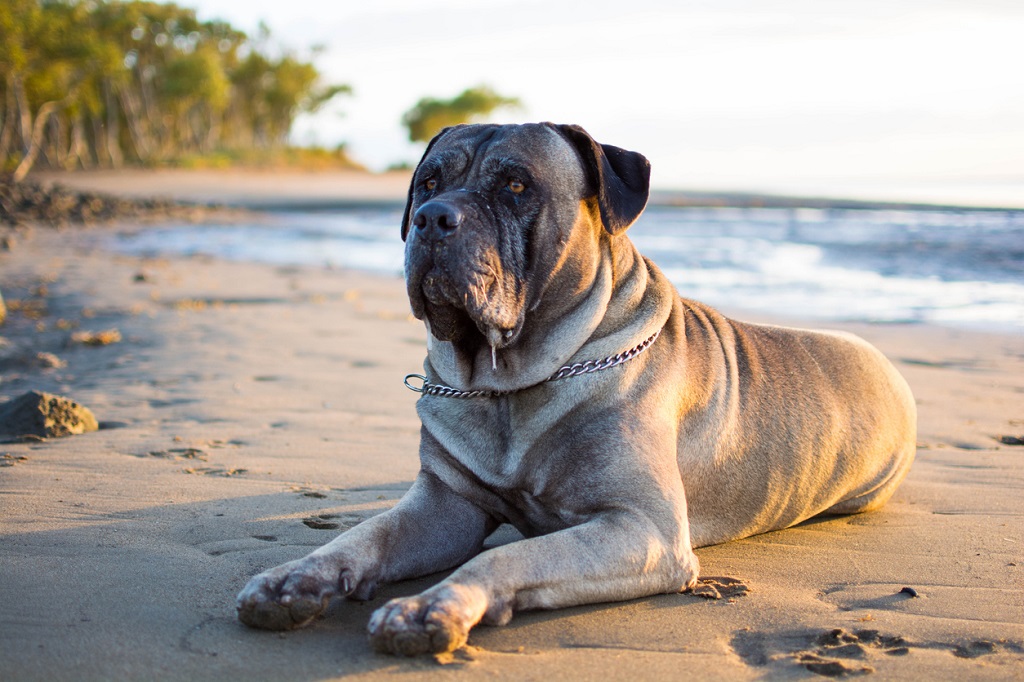

How Big Do Bullmastiffs Get?
Height: 24–27 inches
Weight: 95–135 pounds
How Long Do Bullmastiffs (Generally) Live?
The average lifespan for a healthy bullmastiff is 7–10 years—a range on par with other dogs of this size.
What Is A Bullmastiff’s Temperament & Personality Like?
Blanket statements are never 100% accurate, but you can safely assume that your bullmastiff will be a winning combination of loyal, protective, and affectionate. And when you think about the breed’s history, it all makes sense.
After spending generations guarding gigantic tracts of land, bullmastiffs developed a sense of courage and confidence. At the same time, these daring dogs were more than just gamekeeper guard dogs—they were partners and friends. Their masters relied on them, so they became reliable, devoted, and even loving. You can expect a similar relationship with your bullmastiff.
With that said, it takes work to raise an accepting-of-everyone bullmastiff. Without early socialization and obedience training, you might end up with a rough-and-tumble mutt whose only instinct is to protect and pursue—after all, that’s what they were brought up to do.
Are Bullmastiffs Good With Kids? Cats? Dogs?
Is your kid ye Olde Englishe poacher? No? Then you’re probably A-OK. While the bullmastiff was bred as a guard dog, its thief-thwarting days are long gone—especially when they’re raised as canine companions and not gamekeeper goons. Bullmastiffs actually have a reputation for being docile and respectful around children, as long as they receive the same treatment in return. Keep one eye on the kids and another on your pooch, and you should have no troubles.
In general, bullmastiffs are equally tolerant of other dogs, though some may go on high alert when around canines of the same sex. Overall, however, bullmastiffs make polite hosts. Remember, these brave bruisers were bred to protect the estate and its denizens from would-be poachers; there’s nothing in their internalized job description about wrangling other canines. If both pups follow The Golden Rule, you’re golden.
Cats, on the other hand, have more of an uphill battle. Bullmastiffs weren’t hunting dogs, but they still have an innate prey drive that can make cats seem like an ideal entrée. As with most dogs, bullmastiffs can learn to love felines, but it’s wise to socialize them early and drive home the fact that cats are friends—not food.
In fact, that’s the secret to raising a friendly, open-minded bullmastiff: Start ‘em early. When you introduce your dog to cats, canines, and kids at a young age, they’ll likely buck their overprotective nature and grow up as kind-hearted as they come.
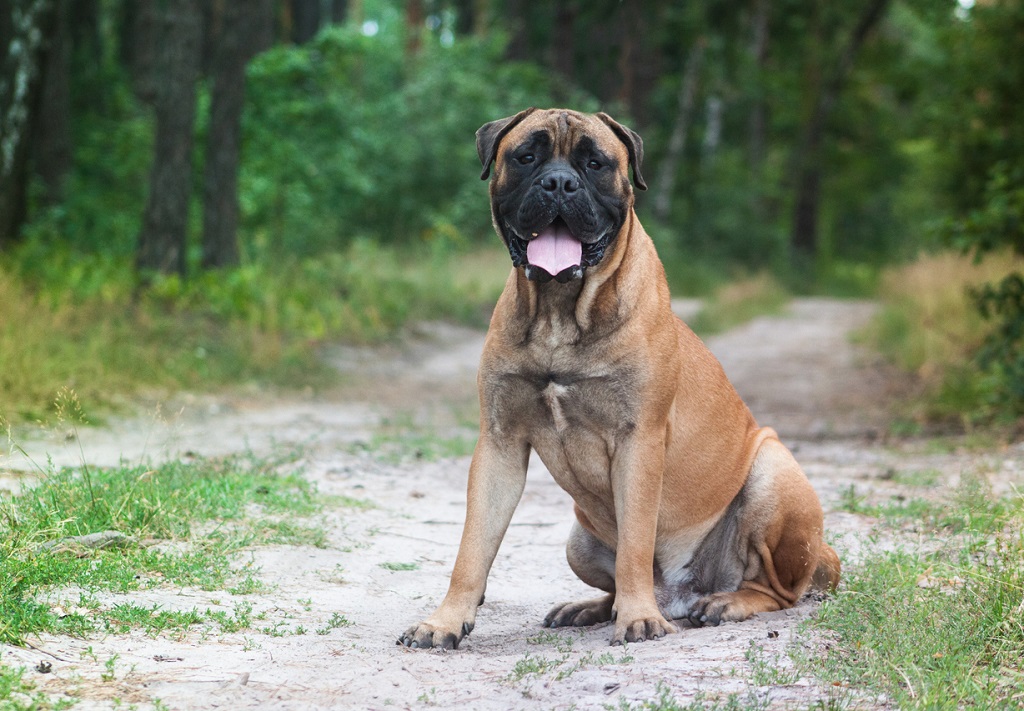

Do Bullmastiffs Need A Lot Of Exercise?
Despite their size and athletic stature, bullmastiffs aren’t Olympic athletes-in-the-making. As long as they receive moderate exercise—about an hour of walking or playing every day—they’ll be able to stay in tip-top shape.
It’s worth mentioning that a bullmastiff puppy should not be overexercised; you’ll want to avoid high-impact activities until its at least 18 months old.1
Are Bullmastiffs Hard To Train?
As a rule, bullmastiffs take to training fairly well; the breed is known for its skills in obedience, agility, and tracking. But there’s a catch—you have to start training ASAP.
Because bullmastiffs can be somewhat stubborn and strong-willed, it’s essential to take charge as soon as you bring your bullmastiff puppy home. Some owners may find it worthwhile to sign up for puppy obedience classes. The early introduction of rules, coupled with exposure to other dogs, can do wonders for a growing bullmastiff.
Do Bullmastiffs Have Health Issues?
Every breed has its list of unique afflictions, and the bullmastiff is no exception. Bullmastiffs and other large breeds like the Tibetan Mastiff and Great Dane, in particular, may be more prone to certain health problems than their smaller counterparts.
Some of the issues that bullmastiffs may encounter include:2
- Bloat (stomach distension)
- Entropion (inversion of the eyelid)
- Heart murmurs
- Hypothyroidism
- Kidney disease
- Hip and elbow dysplasia
- Various bone diseases (panosteitis, osteochondritis dissecans)
While this might feel like a long and serious list, keep in mind that most of these conditions are easy to treat or manage, especially when caught early by vets. Responsible breeders will screen their stock for the most common health concerns, while pet insurance can help lower treatment costs , so don’t despair.
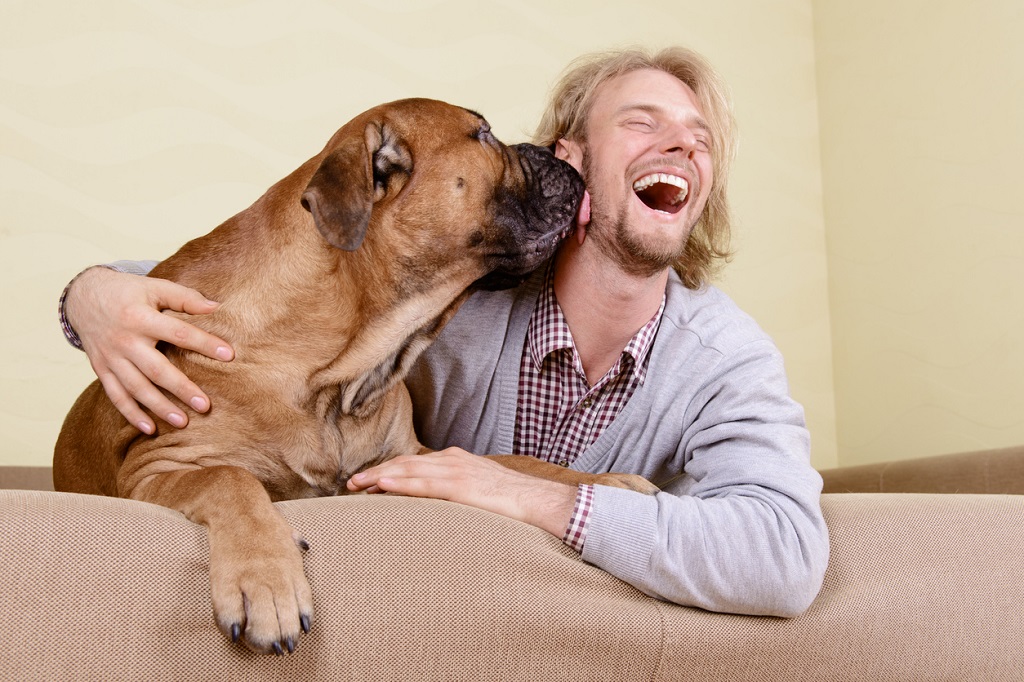

Do Bullmastiffs Need To Be Groomed?
According to the American Kennel Club, Bullmastiffs shed seasonally, so you can strike “doggy haircuts” from your to-do list. However, canine grooming is about more than the ol’ cut and color. All dogs need to be groomed; the basics for the bullmastiff are:
- Brushing the coat (twice a week)
- Trimming the nails (every three weeks)
- Cleaning the ears (once a week)
- Brushing the teeth (twice a week)
And while bullmastiffs aren’t a particularly scraggly or smelly bunch, consider bathing them every 4–6 weeks.
How Much Does It Cost To Care For A Bullmastiff?
Canine care costs depend on your location, budget, and the life you (and your dog) live. On average, you’ll likely spend $2,000+ per year on the necessities.
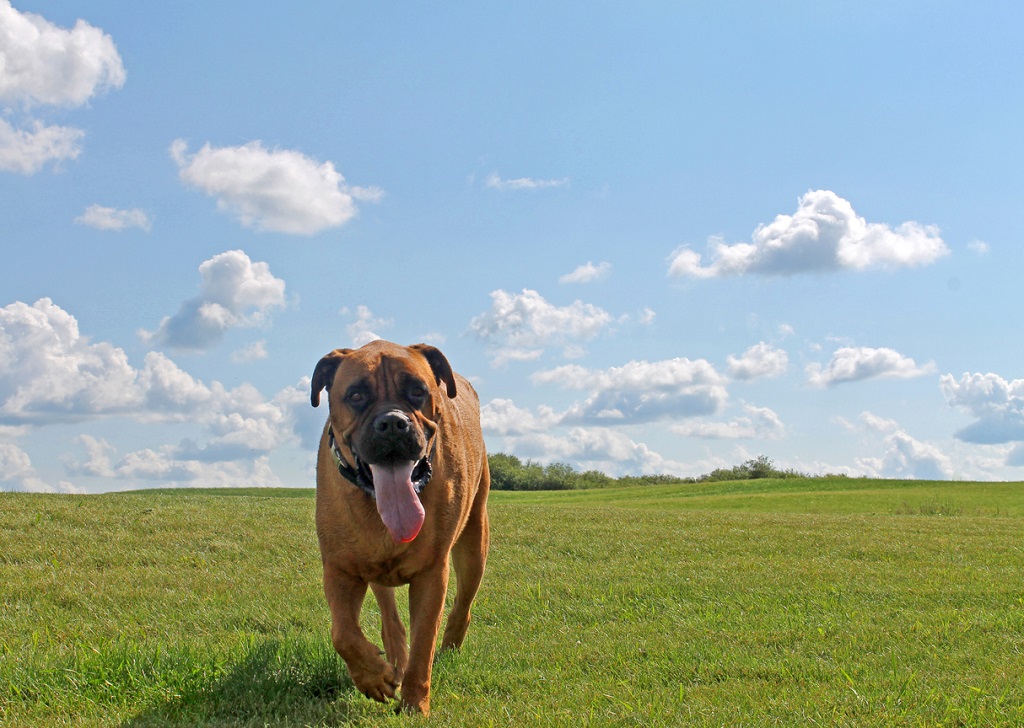

Food
Bullmastiffs aren’t the biggest breed out there (that’s the great Pyrenees), but they still tower over most other dog breeds. And with great size comes a great appetite; prepare to dish out 3–5 cups of dog food per day.
Whenever possible, split this mountain of kibble into two or three meals. Because bullmastiffs are prone to bloat, their tummies do better with smaller portions.
So much food, so little time to hit the pet store. If only there were an easier way… Well, with BARK Eats, there is! Subscribe and watch the food bags show up at your house every month. With ingredients backed by veterinarians and recipes made especially for your bullmastiff pup, you’ll know those 3–5 cups are full of the good stuff. Get 50% off your first month!
Routine Vet Care (Healthy Dog)
No matter how your bullmastiff is feeling, you should buckle them into their canine car seat and head to the vet’s at least twice a year.
When you arrive, here’s what you can expect to spend:
- Vet fee ($45–65 per visit)
- Vaccinations ($20–35 per dose)
- Heartworm medications ($40–50 per dose)
Preventative Medications For Bullmastiffs
Preventative care for plus-sized pooches usually involves:
- Flea and tick medication – Outdoor dogs need outdoor protection. Whether you prefer ointments or medicated snacks, you should budget around $130 per year.
- Glucosamine chondroitin – Because hip and elbow dysplasia often affects bullmastiffs, glucosamine supplements can help them feel their best. Note: Ask your vet if glucosamine is right for your dog before you spend the $100/year on these special chews.
Bullmastiff Grooming
If you bring your bullmastiff to the salon, you’ll probably walk away $70–100 lighter. To save on grooming costs, consider picking up some shampoo and a set of nail clippers for home use.
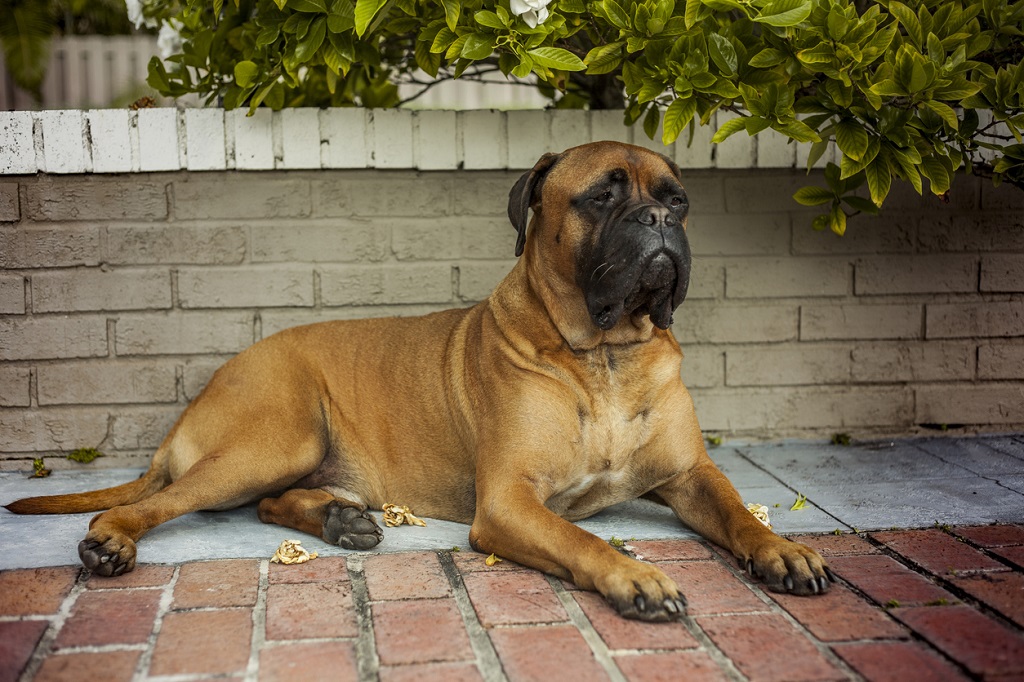

Toys, Treats, Beds, & Accessories
Treats and toys are the cherries on top of a dog’s comfy home life. To thoroughly pamper your pooch, pull $80/year out of the piggy bank for treats and another $55/year for toys.
Don’t you and your dog deserve the best? If you heard an affirmative bark from the couch, you need a BarkBox subscription. The $23/month option brings 2 toys, 2 bags of treats, and one tasty chew to your door every time. Step it up to $29/month, and you’ll receive 2 bullmastiff-proof toys, 2 treat bags, and 2 meaty chews for those special occasions. Sign up now, and DOUBLE YOUR FIRST BOX FREE.
Finally, to prep for dog ownership, don’t forget about these must-haves:
- Dog bed ($50–90)
- Leash and collar ($40)
- Nail clippers ($13)
- Food and water dishes ($20)
- Pet license ($30–100)
Sources:
- American Bullmastiff Association. About The Breed. https://bullmastiff.us/about-the-breed/#history-of-the-breed
- American Bullmastiff Association. Common Diseases & Conditions. https://bullmastiff.us/health-rescue/#common-diseases-and-conditions


